Artist Profile: Elizabeth Catlett
I Am a Black Woman: Elizabeth Catlett & Representation in Art
Elizabeth Catlett’s landmark contributions to twentieth-century art begin in the 1940s with a new representation of African American women. Catlett was the first Modern artist who centered her identity as an African American woman and artist in her work. By the 1960s, through her painting, sculpture and printmaking, Catlett had created a unique and important voice in Modern art.
Early-Life
Elizabeth Catlett was born in Washington, D.C. in 1915. She received her undergraduate degree from Howard University in 1937 with the goal of being an art teacher. Following her interest in the paintings of Grant Wood, Catlett decided to enroll in the University of Iowa — where Wood taught — and was one of three students to receive the first MFAs from the program in 1940, and the first African American woman to do so. After earning her MFA Catlett split her time teaching between Dillard University in New Orleans and summers in Chicago. Catlett’s modern development as an artist began shortly after this time in the early 1940s of New York.
The 1940s: Elizabeth Catlett’s Time in New York
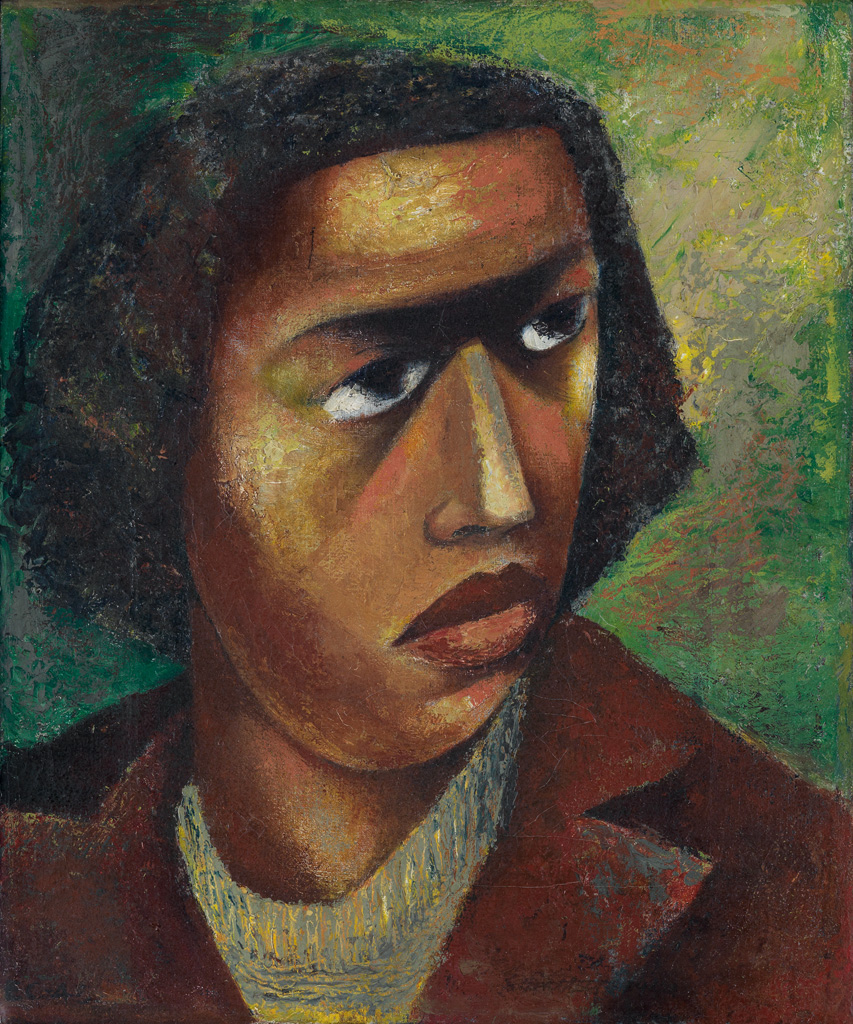
Elizabeth Catlett, Head of a Woman (Woman), oil on canvas, 1942-44. Sold in 2018 for $209,000.
Now in the Collection of the Metroplitan Museum of Art.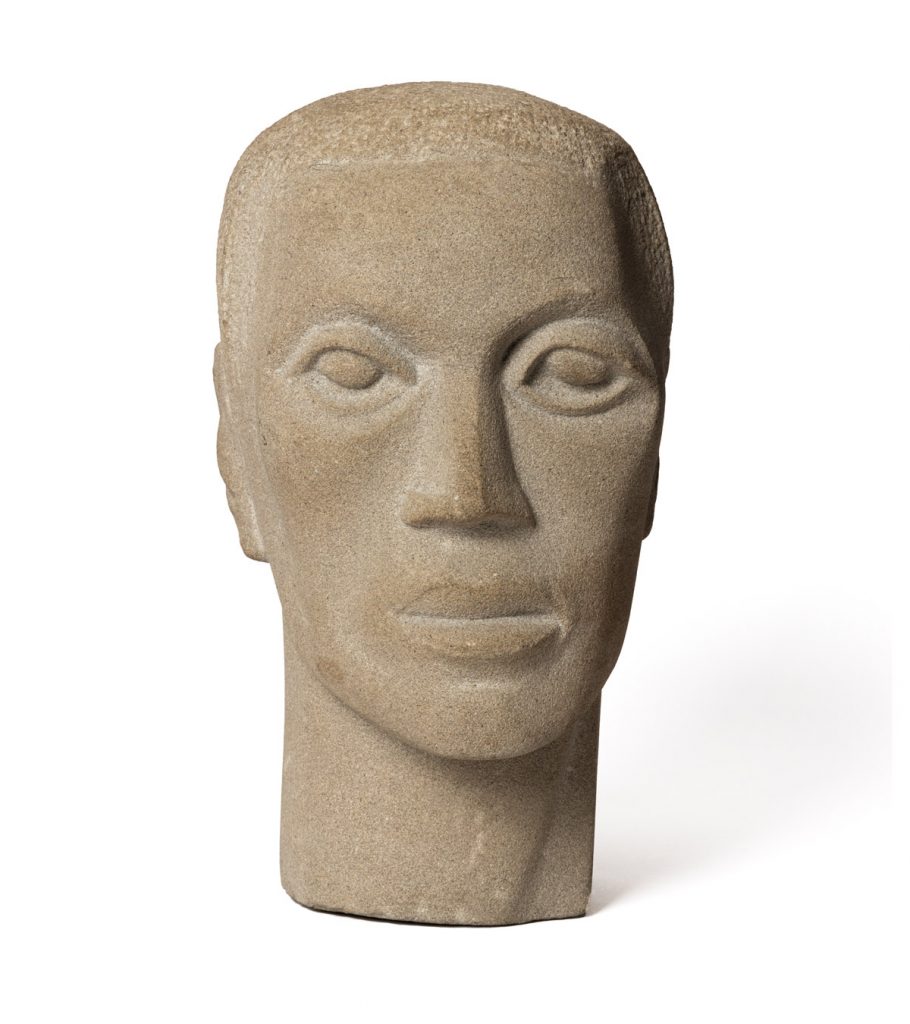
Elizabeth Catlett, Head, carved limestone, 1943. Sold in 2021 for $485,000, a record for Catlett.
Now in the Collection of the Art Institute of Chicago.
In 1942, Catlett moved to New York with her then-husband and fellow artist, Charles White, after their initial meeting in Chicago in 1941. Her first summer in New York, Catlett took private lessons and worked in the studio of the Russian modernist, Ossip Zadkine, who introduced her to the ideas of abstraction within sculpture. From 1944 to 1946, Catlett worked at the George Washington Carver School located in Harlem. There Catlett taught sculpture and sewing alongside White and other such artists as Gwendolyn Bennett, Ernest Crichlow and Norman Lewis. Actively teaching working class people in a progressive community school was an intimate experience that helped shape the social and political consciousness of her art. Her early oil painting Head of a Woman and stone sculpture Head reflect Catlett’s interest in both modernism and social realism.
The 1940s: Elizabeth Catlett’s Move to Mexico & Exploration of Printmaking
In 1946, upon winning a Julius Rosenwald Foundation Grant, Elizabeth Catlett left New York for Mexico City. There, between 1946 and 1947, she embarked on her monumental printmaking project, I am the Negro Woman series, while at the Taller de Grafica Popular. Catlett’s printmaking was inspired by the Mexican collaborative press and the political art it produced. For the first time, as Melanie Herzog writes, Catlett embedded herself in her artwork, as “through her naming, she transformed the artist/object relationship into one of profound identification,” inserting herself as an African American woman into a narrative whole.”1
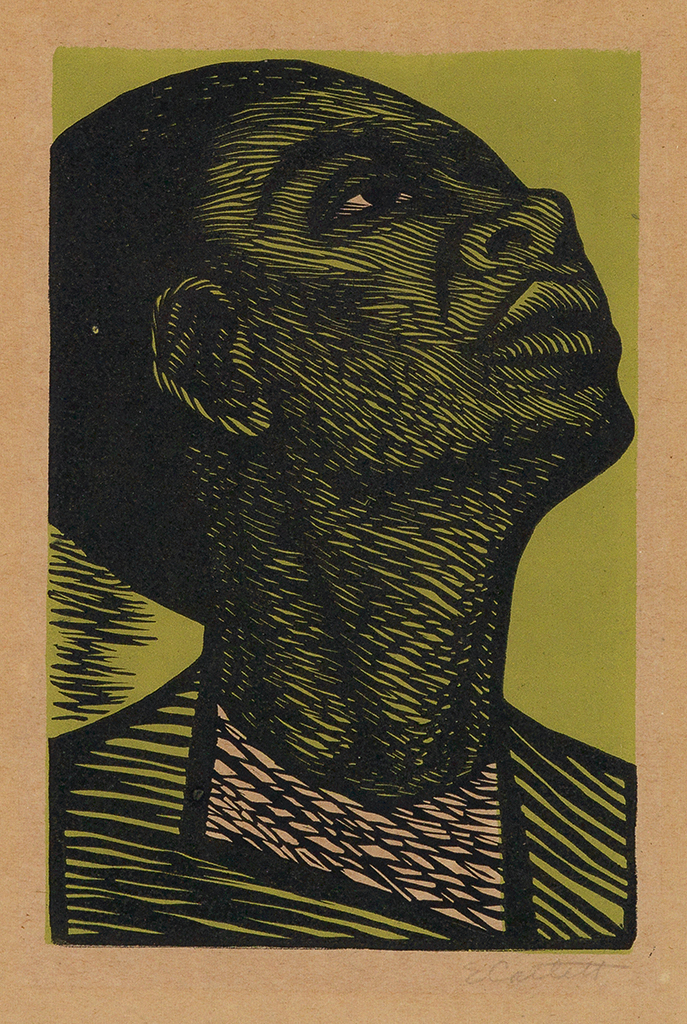
Elizabeth Catlett, My right is a future of equality with other Americans, linoleum cut, 1947. Sold in 2016 for $11,250. 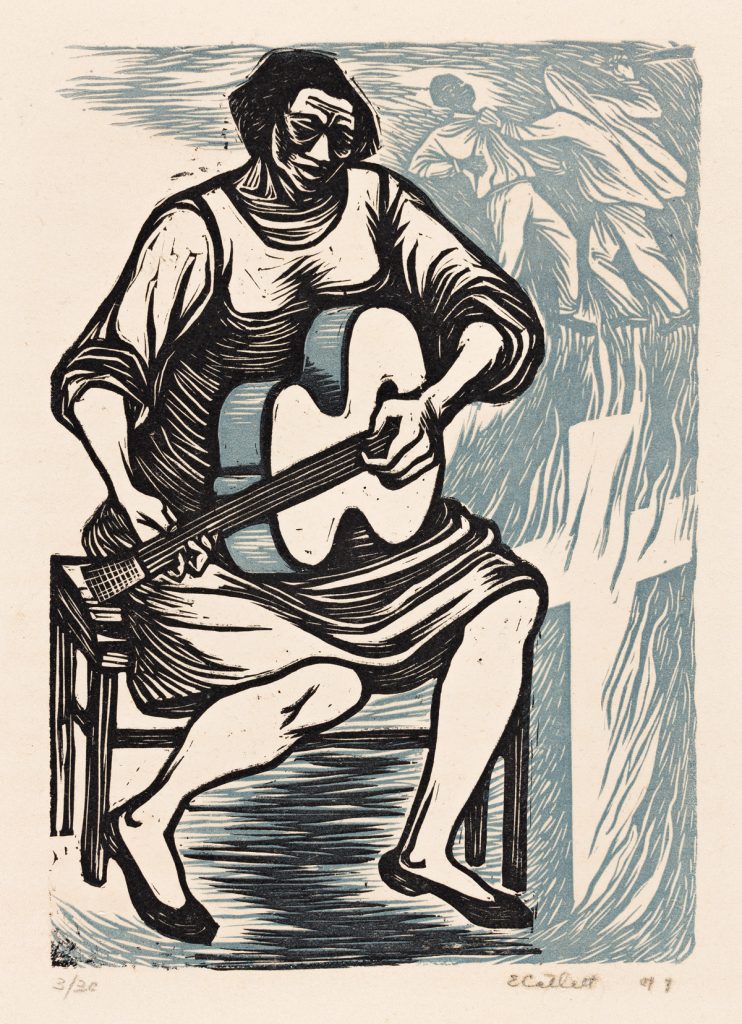
Elizabeth Catlett, I have given the world my songs, linoleum cut, 1947. Sold in 2020 for $21,250.
Catlett’s series of 15 linoleum cuts was exhibited in December of 1947 at the Barnett-Aden Gallery in Washington, DC in her first solo exhibition — Paintings, Sculpture, and Prints of the Negro Woman. Also included were 11 paintings and four terracotta figures entitled Negro Woman, Tired, Cold, and Frustration. Her exhibition at the Black-owned gallery was a bold debut and a landmark in the history of African American art. The work presented illustrated a dynamic narrative of the shared identity and experience of African American women — Catlett’s women were everyday people who with rolled-up sleeves, persevered in the face of great obstacles.
Terracotta Sculpture
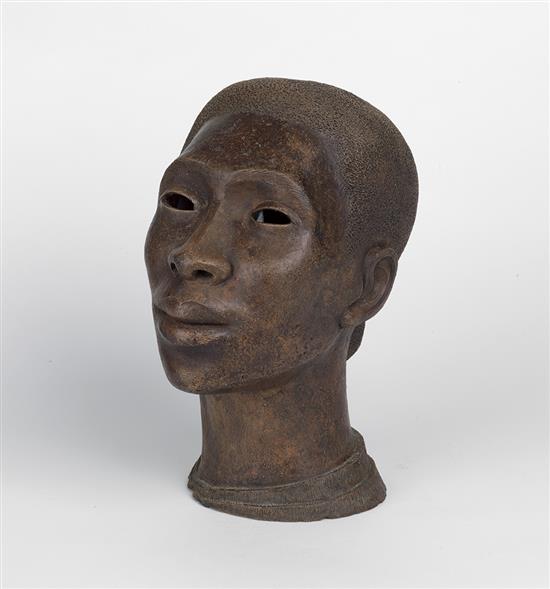
Elizabeth Catlett, Head, terracotta painted dark brown, 1947. Sold in 2013 for $173,000.
In her first full year of living in Mexico, Catlett also studied terracotta sculpture with Francisco Zuniga. That year she created the terracotta bust Head in which the inherent qualities of the medium help convey its beauty. This exquisite portrait of a young African American woman pays close attention to the surface of the hair and its rich color.
Sharecropper

The early 1950s continued to be an important period for Catlett — she continued to produce a large body of graphic work while also taking a break from sculpture to raise a young family. The artist would create her most recognizable work — the linoleum cut, Sharecropper. Catlett first exhibited this now iconic print during 1952 in Atlanta as Negro Woman.
Sharecropper was also titled Cosechadora de Algodón when her print was illustrated in the journal Artes de México in 1957. Catlett’s mastery of the medium enabled her to deftly imbue her subjects with a social and political consciousness. Sharecropper is a heroic portrait of a woman tenant farmer that conveys both strength and sensitivity.2
Elizabeth Catlett, Cosechadora de Algodón (Sharecropper), linoleum cut, circa 1952. Sold in 2018 for $27,500.
Related Reading:
The 1950s: Focus on Natural Realism — Elizabeth Catlett’s Representation of Black Women
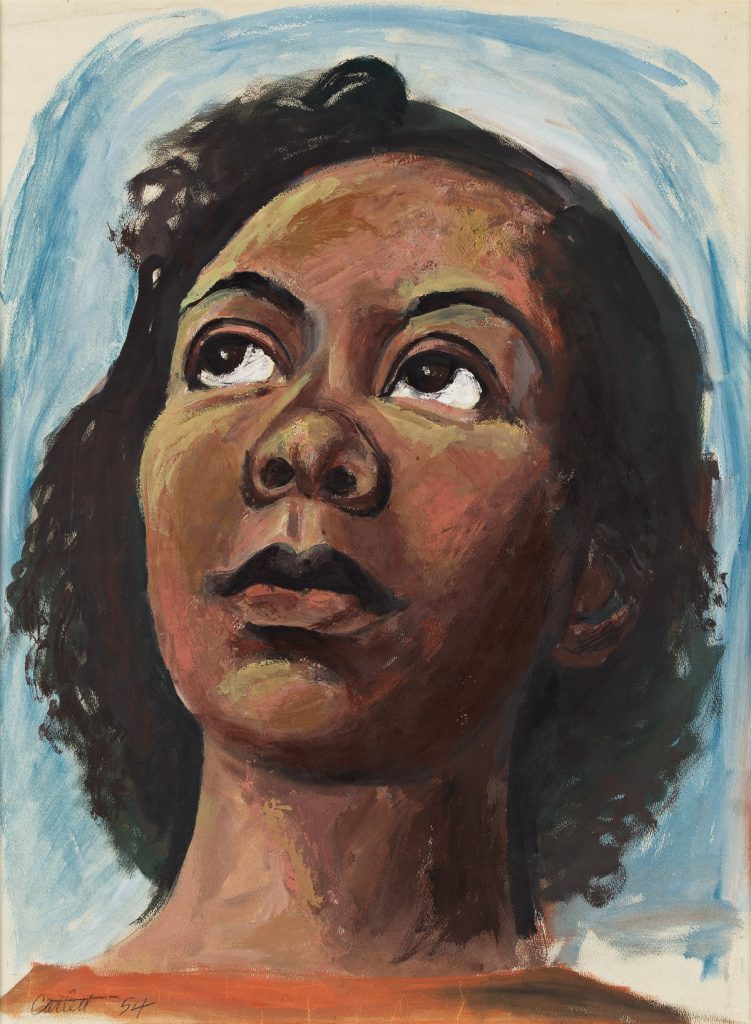
Catlett’s mid-career work continued to evolve in its representation of African American women. The above attractive portrait of a modern, young woman is an unusually large and scarce mid-century painting. Despite the post-war movement towards abstraction, Catlett’s work remained centered around the figure. This painting demonstrates Catlett’s transition from angular modernism in the late 1940s to a more natural realism in the 1950s. The following year, Catlett also returned to sculpture.
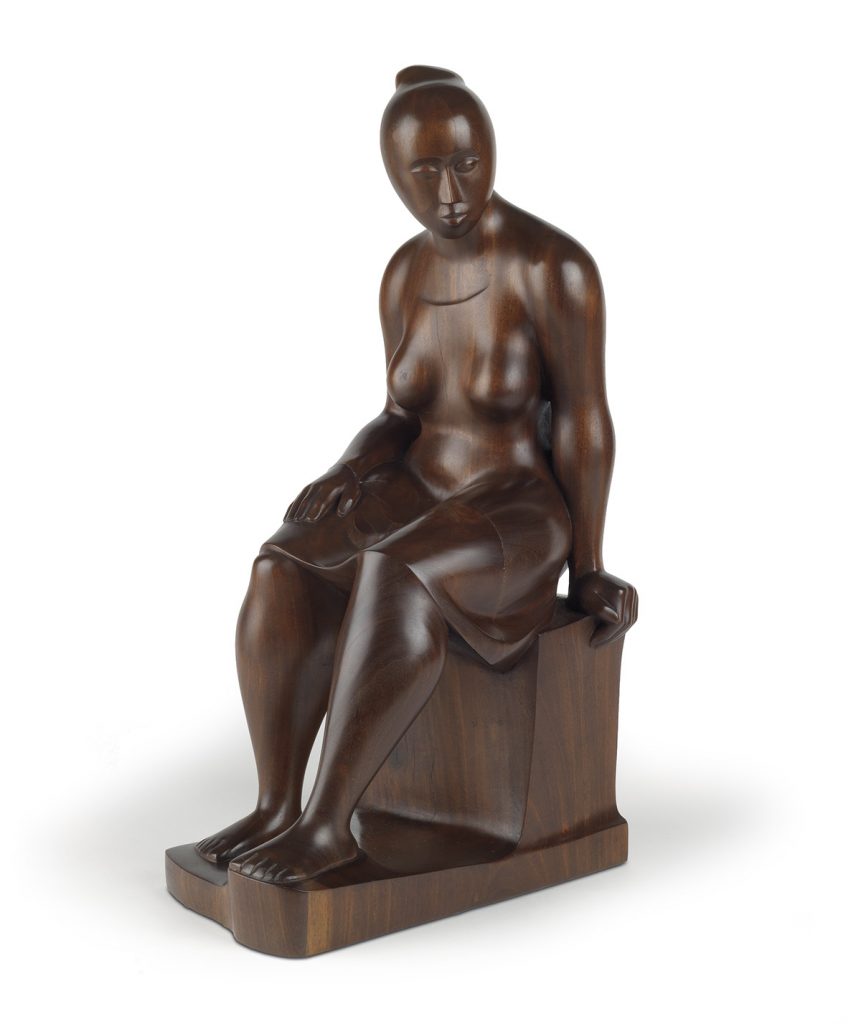
Now in the Collection of the Saint Louis Art Museum.
Catlett’s artistic representation of women reached new heights with her development of wood sculpture in the late 1950s. A significant contribution to wood carving, the above beautiful and complex mahogany sculpture demonstrates Catlett’s masterful technique and the work to follow. She first studied wood carving between 1955 and 1959 with sculptor, Jose L. Ruiz, at La Esmeralda in Mexico City. By 1962, Catlett had her first Mexican solo exhibition at Escuela Nacional de Artes Plàsticas, San Carlos, according to Melanie Herzog, where Catlett had become the first woman to teach sculpture in 1959. The same year, she also won the Tlatilco prize in Mexico’s first national sculpture biennial with her large-scale Figura, 1962, and became a Mexican citizen.3
The 1960s & Forward: An Amalgam of Social Realism & Modernism & Elizabeth Catlett’s Response to the Civil Rights Struggle
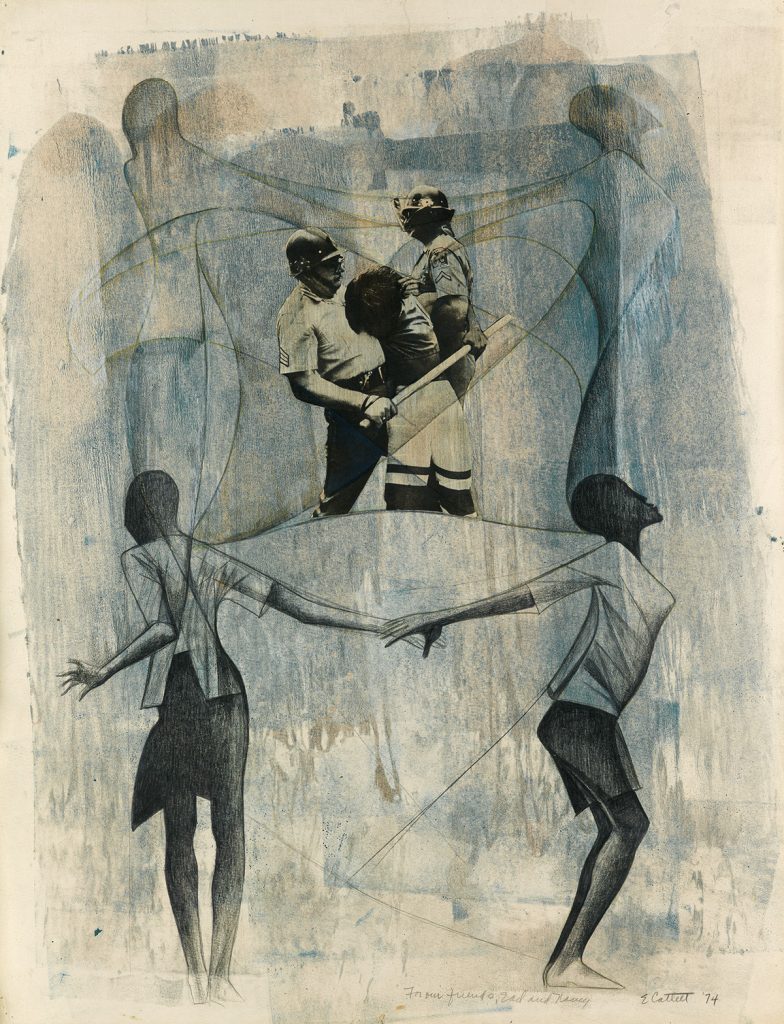
Elizabeth Catlett, Untitled (Civil Rights Protest), mixed media, 1974. Sold in 2019 for $118,750.
By 1960, Catlett’s artistry had transformed an amalgam of social realism and modernism into a unique aesthetic. She synthesized new techniques in both printmaking and sculpture inherited from her experience in Mexico. Her printmaking and sculpture would continue to evolve with her response to the Civil Rights struggle in the late 1960s. But her work would remain true to representing women, black women and herself.
Do you have a work by Elizabeth Catlett we should take a look at?
Learn about how to consign to an auction, and send us a note about your item.
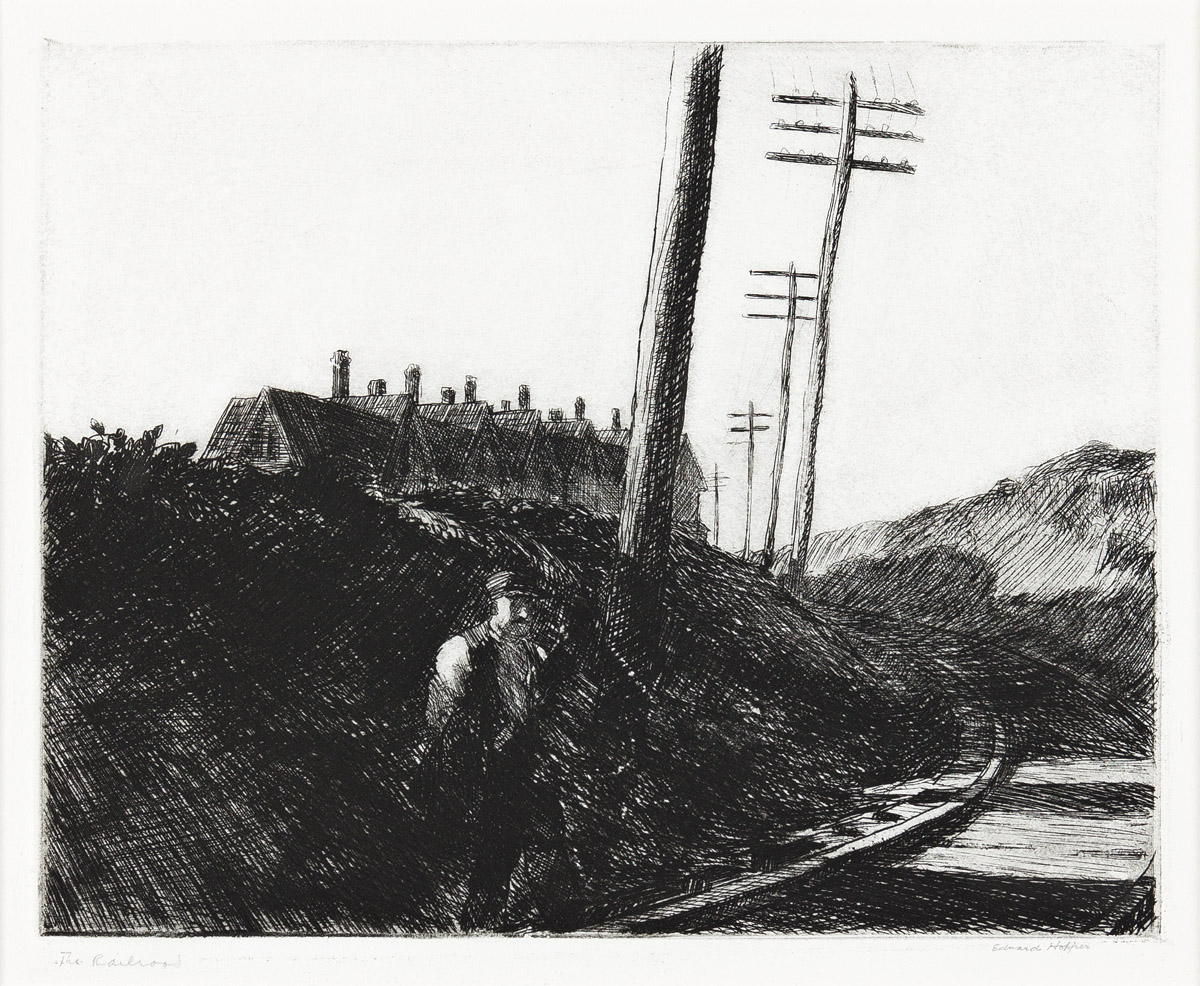
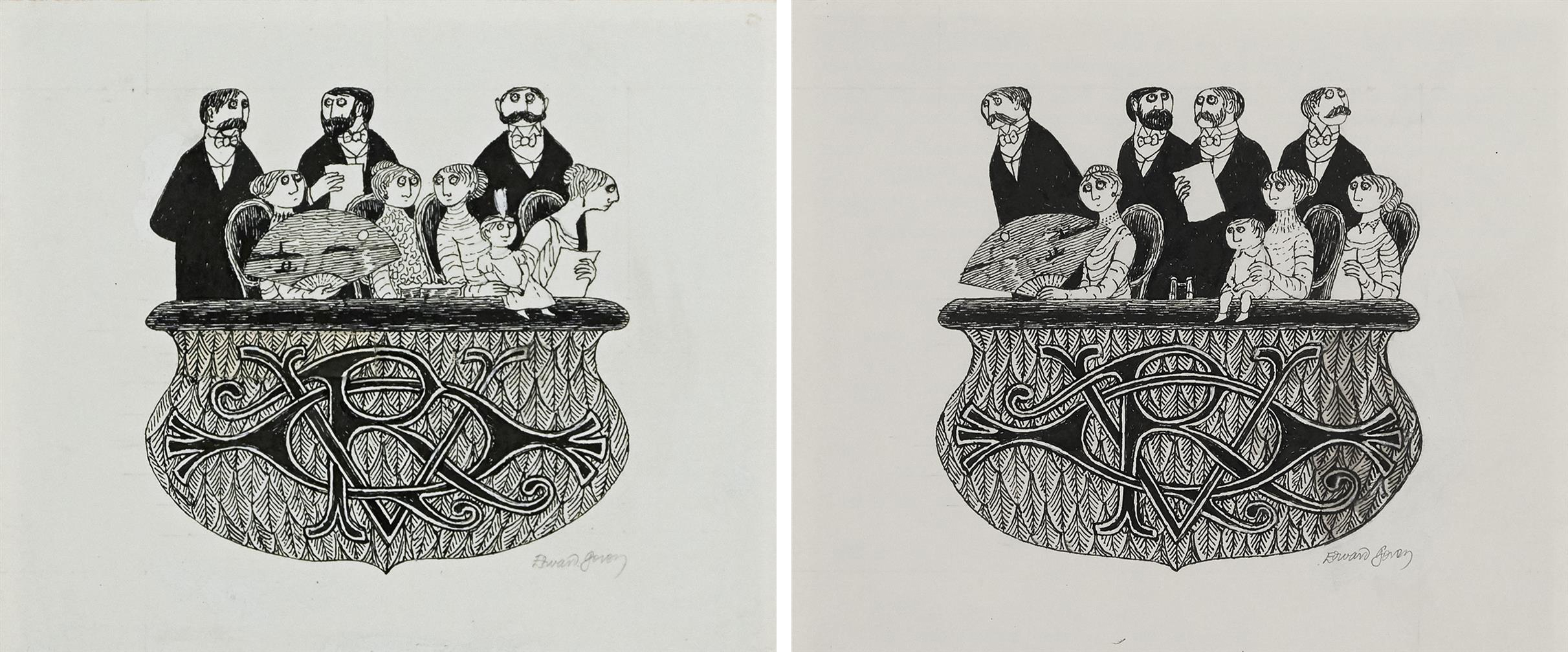
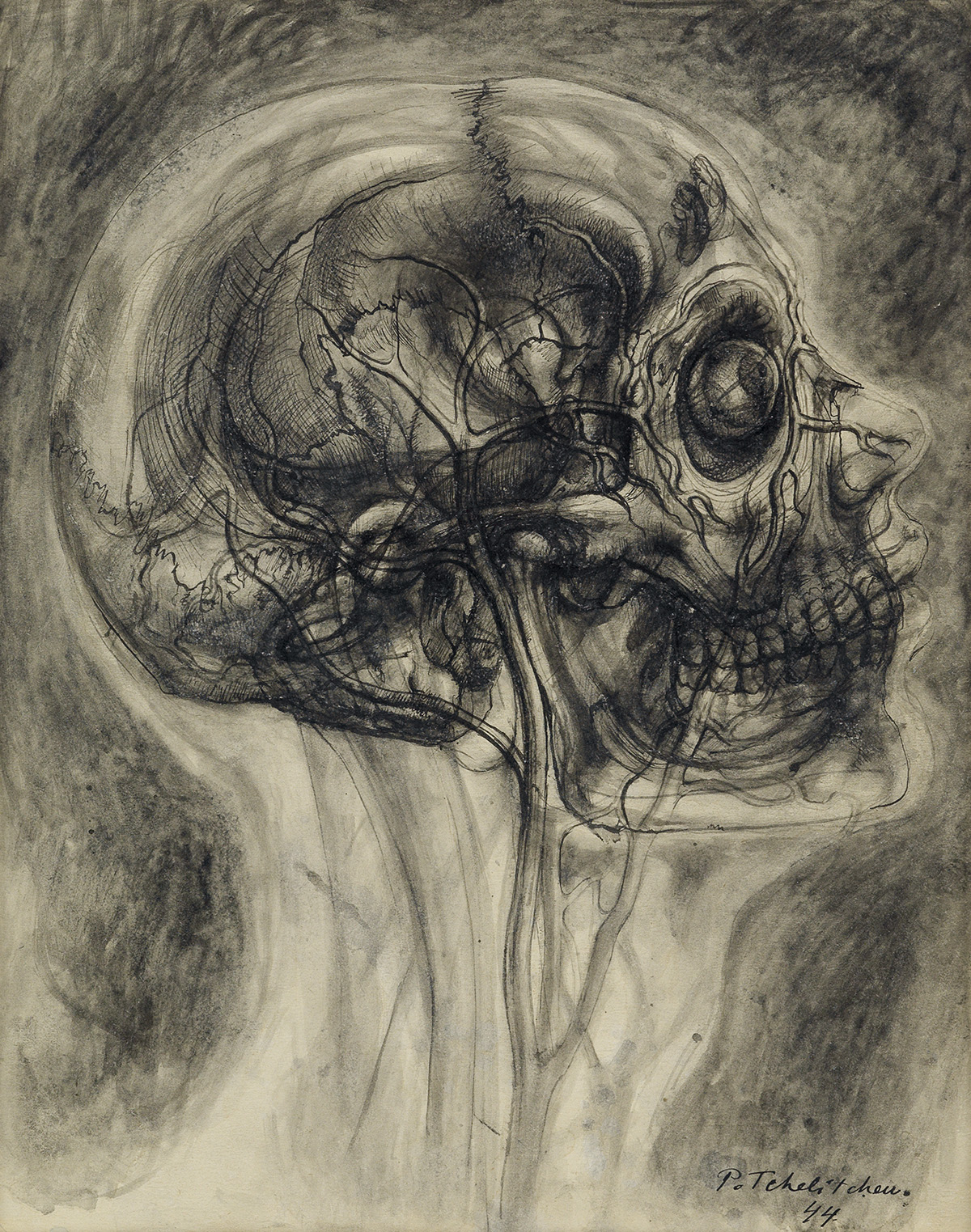














![Grace Meschery-McCormack shares about two copies of Fernando de Rojas’s ‘La Célestine,’ including a limited edition copy illustrated by Pablo Picasso.
At auction April 22. Learn more about the works at the link in our bio.
#Rarebooks #rarebookdealer #antiquarianbooks #auctions
_______________________________________
Music Credit:
Schubert - Piano Quintet in A major ‘The Trout’, D. 667 - IV. Andantino – Allegretto
Music provided by Classical Music Copyright Free on Youtube [https://tinyurl.com/visit-cmcf]
Watch: • Schubert - Piano Quintet in A major ‘...]](https://scontent-iad3-1.cdninstagram.com/v/t51.75761-15/491443494_18499096345036585_5935932878956098058_n.jpg?stp=dst-jpg_e35_tt6&_nc_cat=107&ccb=7-5&_nc_sid=18de74&_nc_ohc=QlZg0o3Vx4oQ7kNvwHlPDYS&_nc_oc=Admkx5CH3-5gNl9kFtE07uGBWzC1TrU8LutoXTk30m77fiWC0m2_oIjIUSQBbJE8mA8&_nc_zt=23&_nc_ht=scontent-iad3-1.cdninstagram.com&edm=AM6HXa8EAAAA&_nc_gid=Pe1umN91MEXpkwcZIAoyzA&oh=00_AfL0aLte8jNzcTguOVsdcdqJNkw1tTNFwy_v2TCIwQ11Pw&oe=6828BE91)
